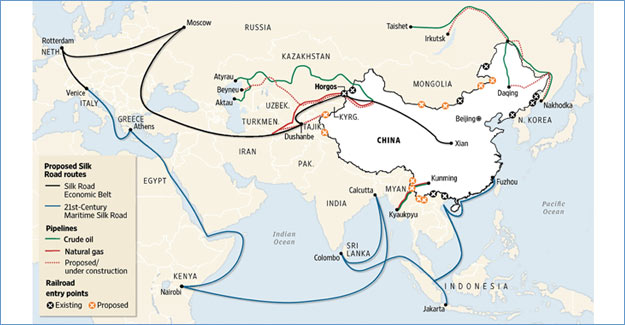H&M Is committed To Green Development Of China's Textile Industry
H&M Is committed To Green Development Of China's Textile Industry

At the recent Urumqi Forum, H&M's Hanna Hallin, Head of Sustainability, Greater China talked about the company's commitment to developing a more sustainable textile and clothing industry in China. H&M Foundation has tied up with Hong Kong Research Institute Of Textile & Apparel (HKRITA) to develop clean technology. More specifically, technology to extract fibres from waste textiles and clothing items, keeping intact the quality of the fibre. "We believe China is in a unique position to be a role model in circular economy, and H&M's role is to make it attractive to buy such products," said Hallin.
So why did H&M choose China? "We have been sourcing from China for more than five decades. We have 400 stores in China, with more that could be opened in the future. There is therefore a strong basis for working with Chinese suppliers to improve our supply chain," she said.
As we know, fashion industry is the most polluting and resource oriented industry, globally. H&M, t has been working towards improving its environmental footprint.
For H&M, it used to be about offering fashion and quality at the best price. Today, it is about offering fashion and quality at the best price in a sustainable way. By 2050, the earth will have 9 billion people, and land will need to be increasingly used for cultivating food, rather than fibre. Recycling textiles and apparel will be a good way to free the land for food. "H&M is committed to 100% circular textile economy. We are steadily phasing out conventional cotton. By 2022, we will use 100% sustainable cotton in our supply chains. We are the largest buyers of organic cotton.
We are increasing the use of recycled polyester. We are exploring other sustainable materials too. We are today the largest buyers of recycled polyester. In 2015, we converted 90 million PET bottles into fashion clothing," she informed.
Another important achievement of the retailer has been in developing recycled denim. "Today, 20% of all materials we use are sustainable. Can we go for 100% sustainable materials? We want to, but are constrained because there aren't enough suppliers of such materials. What we have achieved is putting recycled fashion on the red carpet," elaborated Hallin. Another challenge faced by H&M and others is the absence of technology to make recycled fabrics of high quality. So they are improving their collections of old clothes at their stores worldwide, and simultaneously partnering with technology suppliers to develop an appropriate technology.



 textileexcellence
textileexcellence 







